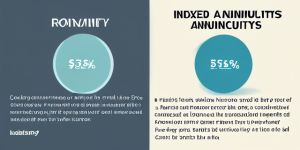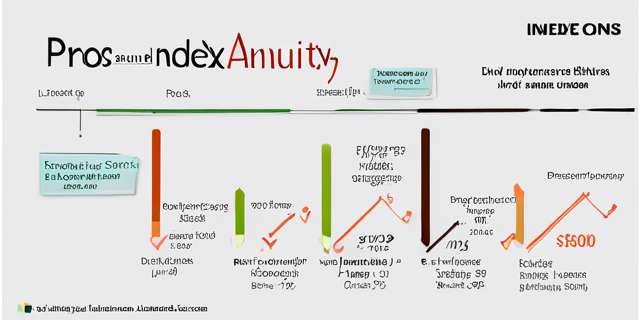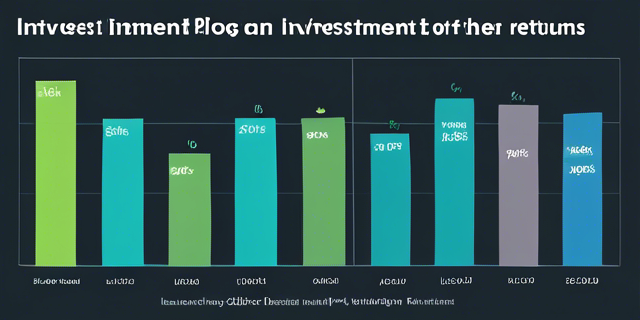The Truth About Indexed Annuities 2024

The Truth About Indexed Annuities 2024
When it comes to retirement planning, indexed annuities have been a topic of much debate. These financial products promise a unique blend of growth potential and protection, but understanding their intricacies can be a challenge. In this comprehensive article, we’ll dive deep into the world of indexed annuities, exploring their advantages and drawbacks, to help you make an informed decision about whether they’re right for your financial future.
What Are Indexed Annuities?
Before we delve into the pros and cons, let’s first define what an indexed annuity is. An indexed annuity is a type of annuity contract that earns interest based on the performance of a specific market index, such as the S&P 500. Unlike traditional fixed annuities, which offer a predetermined interest rate, indexed annuities provide the opportunity for potentially higher returns while still offering some level of protection against market downturns.
The Pros of Indexed Annuities

The Truth About Indexed Annuities 2024
1. Potential for Higher Returns
One of the primary advantages of indexed annuities is the potential for higher returns compared to traditional fixed annuities. By tying the interest earned to the performance of a market index, investors can benefit from the upswings in the stock market while still enjoying a level of protection against significant losses.
2. Principal Protection
Unlike direct investments in the stock market, indexed annuities offer principal protection. This means that even if the underlying index performs poorly, your initial investment is protected from losses, minus any applicable fees or charges. This feature can provide peace of mind for risk-averse investors who want to participate in the market’s potential gains without exposing their principal to the full brunt of market volatility.
3. Tax-Deferred Growth
Like other types of annuities, indexed annuities offer tax-deferred growth. This means that you don’t have to pay taxes on the interest earned until you start withdrawing funds from the annuity. This can be particularly beneficial for individuals who anticipate being in a lower tax bracket during retirement.
4. Lifetime Income Potential
Many indexed annuities offer the option to convert the accumulated value into a steady stream of income payments for life. This feature can provide a reliable source of income during retirement, helping to ensure that you don’t outlive your savings.
The Cons of Indexed Annuities

The Truth About Indexed Annuities 2024
While indexed annuities offer some attractive benefits, they also come with several drawbacks that investors should carefully consider.
1. Caps and Participation Rates
Indexed annuities typically include caps and participation rates, which limit the amount of upside potential you can realize from the market’s performance. A cap is a maximum percentage return that the annuity will credit, regardless of how well the underlying index performs. A participation rate, on the other hand, determines the percentage of the index’s gains that will be credited to your account.
2. Complexity and Fees
Indexed annuities are often criticized for their complexity and high fees. These products can be difficult to understand, with various riders, caps, and participation rates that can significantly impact the overall performance. Additionally, indexed annuities typically come with higher fees compared to other investment options, such as mutual funds or exchange-traded funds (ETFs).
3. Surrender Charges and Penalties
Most indexed annuities have surrender charges or penalties if you withdraw funds early, usually within the first several years of owning the annuity. These charges can be steep, sometimes as high as 10% or more of the withdrawal amount, effectively locking your money into the annuity for an extended period.
4. Limited Liquidity
Indexed annuities are designed to be long-term investments, which means that access to your funds may be limited or subject to penalties. This lack of liquidity can be a significant drawback, especially if you need access to your money for unexpected expenses or emergencies.
Weighing the Pros and Cons

The Truth About Indexed Annuities 2024
As with any financial product, it’s essential to carefully weigh the pros and cons of indexed annuities before making a decision. While the potential for higher returns and principal protection can be appealing, the complexity, fees, and limited liquidity may make these products less desirable for some investors.
It’s crucial to thoroughly understand the terms and conditions of any indexed annuity you’re considering and to work with a qualified financial advisor who can help you evaluate whether it aligns with your overall financial goals and risk tolerance.
Conclusion: The Truth About Indexed Annuities 2024
Indexed annuities can be a valuable addition to a well-diversified retirement portfolio for the right investor. However, they are not a one-size-fits-all solution, and their suitability depends on individual circumstances and preferences. By carefully considering the pros and cons outlined in this article, you can make an informed decision about whether an indexed annuity is the right choice for your financial future.
FAQs: The Truth About Indexed Annuities 2024
1. Are indexed annuities safe investments? While indexed annuities offer principal protection, they are not entirely risk-free investments. The safety of your investment depends on the financial strength and claims-paying ability of the insurance company issuing the annuity.
2. Can I lose money in an indexed annuity? While your principal is protected from market losses, you can still lose money in an indexed annuity due to various fees and charges, such as surrender charges or rider fees.
3. How are indexed annuity rates determined? The rates offered by indexed annuities are determined by a combination of factors, including the performance of the underlying index, caps, participation rates, and the insurance company’s crediting methods.
4. Can I withdraw money from my indexed annuity at any time? Most indexed annuities have surrender periods during which withdrawals may be subject to steep penalties or charges. It’s essential to understand the terms and conditions of your specific annuity before attempting to withdraw funds.
5. Are indexed annuities suitable for all investors? No, indexed annuities are not suitable for all investors. They may be more appropriate for risk-averse investors who prioritize principal protection and are willing to accept potentially lower returns in exchange for that safety. However, they may not be the best choice for investors who require greater liquidity or higher growth potential.








